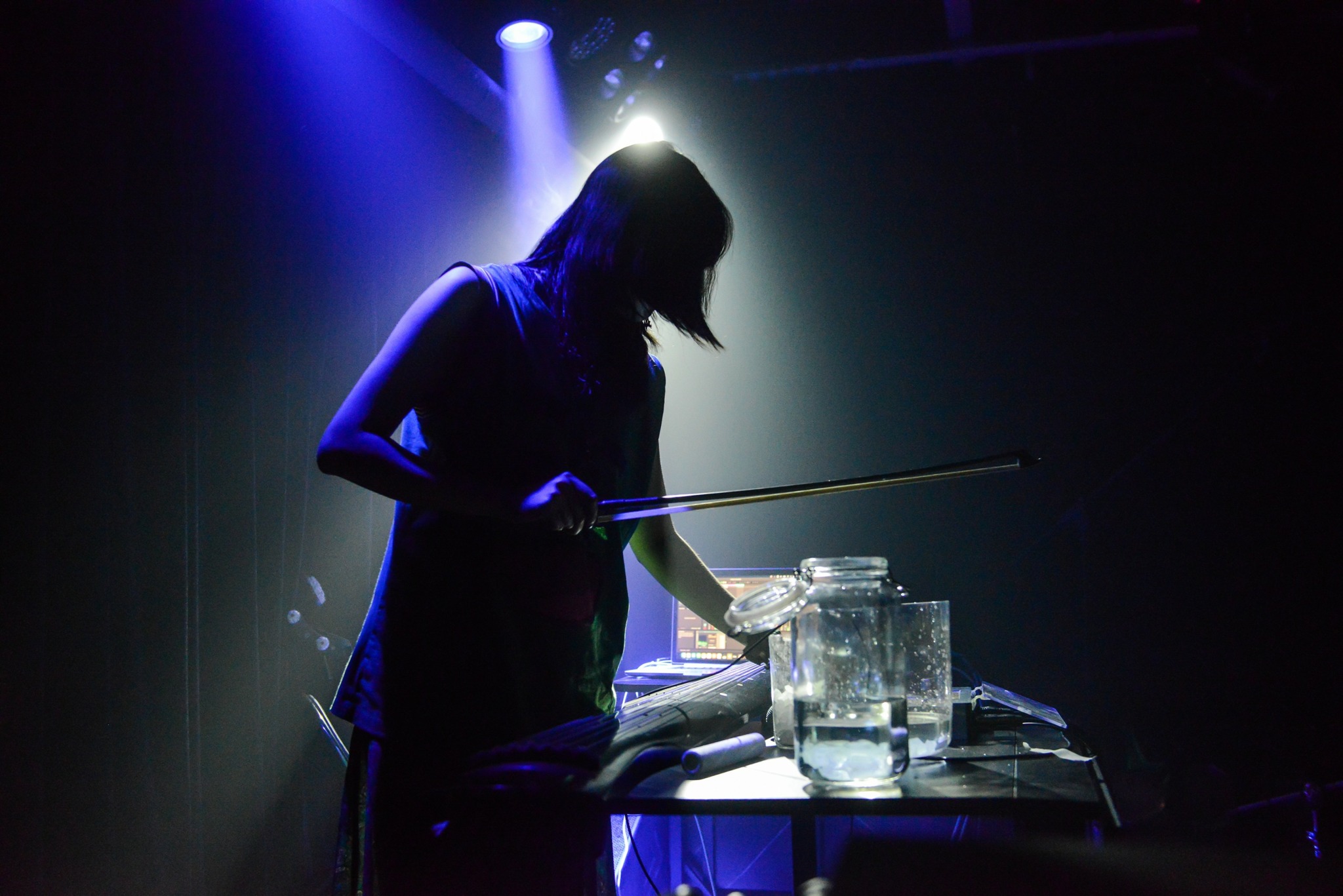Today we’d like to introduce you to Julia Dèng Hànzú.
Hi Julia, so excited to have you with us today. What can you tell us about your story?
I was born in Chongqing, China, and my creative journey began with my early training in traditional Chinese plucked-string instruments such as the pipa, guzheng, and ruan. These instruments rooted me deeply in traditional music and gave me the foundation to explore creativity through sound.
As a teenager, I discovered the world of orchestras, performing as a principal player, and it gave me a profound appreciation for collaboration and storytelling through music. I accidentally started my undergraduate in Financial Engineering but eventually found myself shifting into the realm of Design and Art. I was always intrigued by the intersections of seemingly disparate disciplines, and this curiosity continued to guide me as I now practice what I call a post-disciplinary approach.
I challenged boundaries by combining performance art, sound, and technology in innovative ways. I was the first student in my design course at Goldsmiths, University of London, to introduce live performance into a showcase, blending film, soundscapes, and live improvisation. Since then, my work has evolved to include multimedia installations, experimental compositions, and collaborative projects across Europe and China.
Today, as a multimedia artist, experimental musician, and sound therapist, I continue to explore how inner emotions reflect and resonate with the external environment. My journey has been deeply influenced by my heritage, experiences in various cultural contexts, and the ever-changing possibilities of technology in the arts.
We all face challenges, but looking back would you describe it as a relatively smooth road?
It definitely hasn’t been a smooth road, but the challenges have been part of what shaped my practice.
One struggle was finding my voice in a new cultural and artistic context, especially after moving to the UK, was challenging. I felt a constant tension between honoring my roots and avoiding the traps of self-exoticization.
Another challenge was to navigate through varied disciplines to work out a path of my own when there were no precedents, especially in a world that often values conformity. Whether it was introducing performance art into a design curriculum or blending classical Chinese instruments with contemporary soundscapes, I frequently had to push back against traditional expectations and keep experimenting.
Financial and logistical challenges also played a role, especially in creating ambitious installations or collaborative projects. But each obstacle taught me resilience, adaptability, and the value of community in the arts.
Appreciate you sharing that. What else should we know about what you do?
My work lies at the intersection of music, performance, and multimedia art. I specialize in blending traditional Chinese instruments like the guzheng, pipa, and ruan with experimental soundscapes, extended techniques, and immersive technologies. Through my post-disciplinary approach, I create installations, performances, and interactive experiences that invite audiences to reflect on the connections between the personal and the universal.
One of the aspects I’m most proud of is my ability to bridge cultural and disciplinary gaps. One project I’m particularly proud of is “Con-current: Tuning Intervals”, which is my degree show project at MA Design: Expanded Practice at Goldsmiths, a performative installation then also exhibited at the White Chapel Gallery in London. It was well-received, with critics noting how it bridged both analogue and digital technologies as well as Chinese and European cultural narratives.
What sets me apart is my commitment to experimentation and my deep respect for heritage. I aim to go beyond the surface of cultural symbols, engaging with the essence of tradition while imagining its future possibilities. Whether through performances at international festivals or curating multi-sensory art events, my goal is always to connect people through shared emotional experiences.
What were you like growing up?
Growing up, I was always curious and full of energy, but I wasn’t the typical obedient student. While I consistently performed well academically, I often got into trouble for things like being late or chatting during classes. I’ve always had a strong independent streak and an eagerness to explore beyond the boundaries of what was expected.
I loved doing many different things simultaneously and participated in numerous extracurricular activities. Whether at school arts festivals or sports events, I was always eager to get involved. My favorite subjects were chemistry and biology. Actually, I dreamed of becoming a scientist as a child and never thought of becoming an artist.
Looking back, I think this combination of curiosity, restlessness, and a love for experimentation laid the foundation for my creative journey. It taught me to embrace the idea of exploring multiple paths and combining seemingly unrelated interests—something that still defines my work today.
Contact Info:
- Website: https://www.dhzjulia.com/
- Instagram: https://www.instagram.com/starsineye/
- Youtube: https://www.youtube.com/@starsineye1521
- Soundcloud: https://soundcloud.com/rainrainrainbow
- Other: https://rainrainrainbow.bandcamp.com/






Image Credits
Lik Kun Li, Shiting Yang, Jiji Wei, Janmejay Singh, Fanfu Wu


